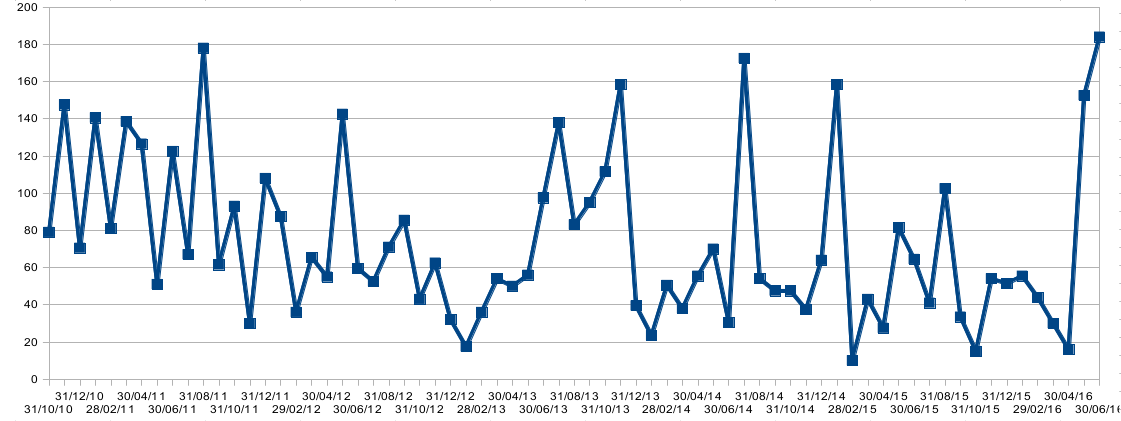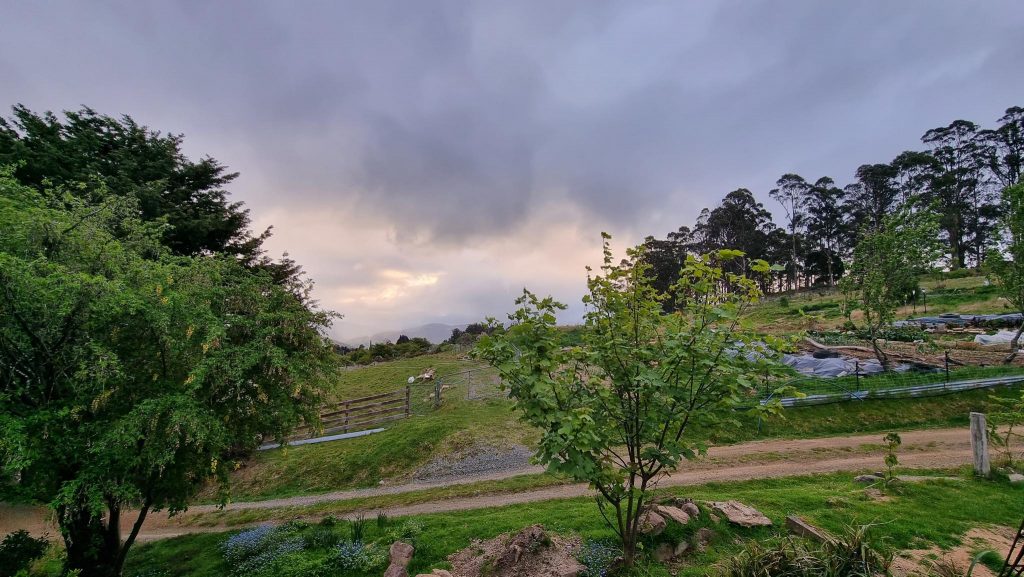
Spring Moment



We’ve decided to undertake a survey of all the plants on our farm. Our very first offering is Senecio Linearifolius, in the family Asteraceae, whose common name is Fireweed Groundsell. Senecio is from the Latin senex, meaning old man. This nomenclature probably refers to the white, fluffy, bearded seeds (Senecio Linearifolius – https://www.nzpcn.org.nz/flora/species/senecio-linearifolius/).

Senecio is one of the largest genus of flowering plants with about 1500 species worldwide (Beech Trail Track Notes – https://anareskiclub.org/wp-content/uploads/2018/07/beech-trail-track-notes.pdf).
A native of Tasmania, it is a fragrant (smells bitter and astringent to me) shrubby perennial which grows to 2 metres in height. It has yellow flowers which grow in a cluster, known as a corymb, wherein the outermost flowers grow longer stems than the inner ones so that the flowers grow all on the same level. The seeds are spread by the wind.
It is widespread throughout Tasmania especially in high rainfall areas. In the United States it is considered an invasive weed (Senecio linearifolius Risk Assessment – https://www.cal-ipc.org/plants/risk/senecio-linearifolius-risk/).
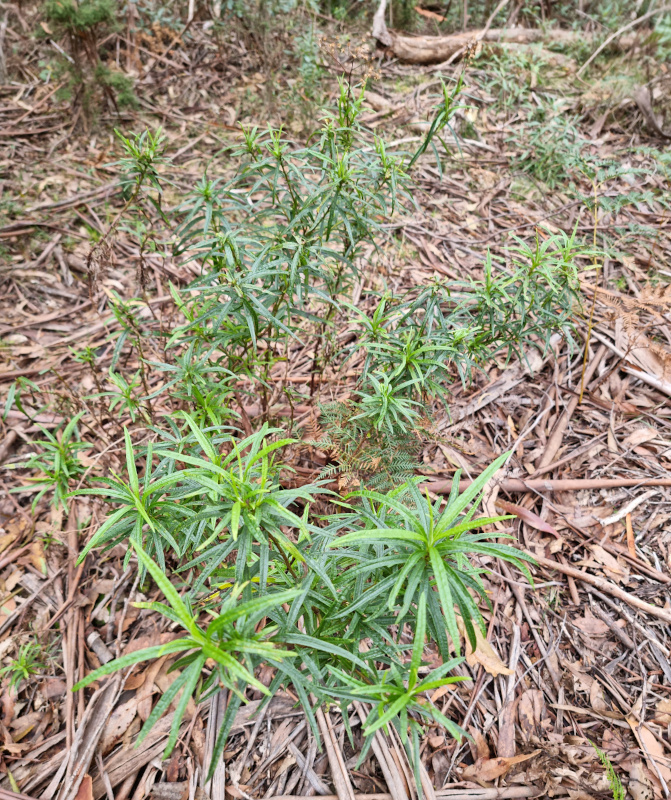
This plant contains pyrrlizidine alkaloids making it poisonous to horses and cattle, who suffer from seneciosis, damage to the liver, kidneys and lungs. There is no effective treatment. Poisoning of horses in Tasmania was called Waratah horse disease, after the area it occurred in (Dickinson CG (1930) Waratah horse disease. Aust. Vet. J. 6:65-67). Sheep are less susceptible to it and will eat it and goats eat it with no troubles. These alkaloids cause veno-occlusive disease in humans (Toxology for Australian veterinarians- https://aapspextranet.animalhealthaustralia.com.au/wp-content/uploads/2019/04/tav7_3_alkaloids_pt1-1.pdf).
Thompson IR (2004b) Taxonomic studies of Australian Senecio (Asteraceae): 2. the shrubby, discoid species and the allied radiate species Senecio linearifolius. Muelleria 20, 67–110.
A little while ago we found ourselves without bacon (well, the next lot of bacon hadn’t finished curing yet, which is approximately the same thing), but we did have some pork mince. The obvious thing to do was make breakfast burgers!
The patty recipe is based on this Grilled Pork Burger recipe, but I got rid of the breadcrumbs and changed the herbs a bit. The ingredients are as follows:
To prepare the mince, crack the eggs into a large bowl and whisk briefly with a fork. Add the parmesan, parsley, salt and garlic powder, and keep whisking until it’s evenly mixed. Add the pork mince and mix it the whole lot up thoroughly with your hands. You can put cling wrap on top and keep the mix in the fridge, then dig out and form into patties on an as-needed basis over the course of a few days.
For the breakfast experience, you will need:
Slice the onions and cook in a pan with a bit of lard, oil or butter (whatever you have handy). Once they’re on the way, heat an electric hotplate (or separate pan), and put the patties on. 180°C works well. Again, use a little lard, oil or butter to avoid sticking. The patties want 4-5 minutes per side. After you’ve flipped them for the first time, wait 2 minutes, then cover with grated cheese, which will proceed to melt. Fry some eggs while you’re waiting for the patties to finish (hint: fry in butter until mostly cooked, then put a lid on briefly which will just seal the tops with steam, and leave the yolks runny). Finally, the onions go on top of the cheese-covered patties, and everything goes onto plates.
Bon appétit!
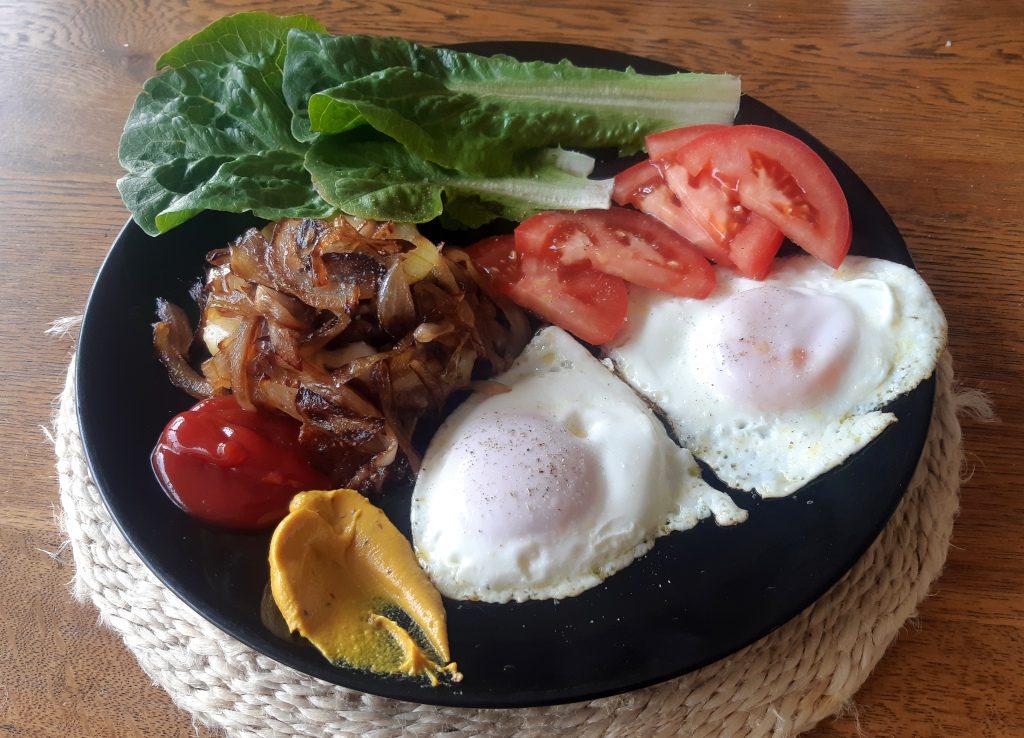
The Amazing Bread recipe I posted here a few years ago has mutated over time (as recipes do). Compared to that earlier version, I’m now using half the ingredients, mixing them in a different order, and ending up with a better result.
Continue reading
I came across an article the other day entitled Humanity ‘Sleepwalking Towards the Edge of a Cliff’: 60% of Earth’s Wildlife Wiped Out Since 1970, and while I applaud the thrust of the article (we’re collectively doing a great deal of damage, and may ultimately wipe ourselves out), the framing, like so many other pieces of this type, is all wrong. Consider this quote:
“human activities are destroying nature at an unacceptable rate, threatening the wellbeing of current and future generations”
The statement about our future notwithstanding, this reduces “nature” to an external thing that we have some sort of power over, when in fact the exact opposite is true.
Nature is not separate from humanity, it’s not an amenity or a tourist attraction, it’s not something we just experience on the weekends, a place we choose to go camping, or to dump our garbage in when nobody is looking.
Nature is a vast cyclical process of life and death, of which humanity is just one relatively insignificant yet insufferably arrogant piece. We each participate in it, all day, every day.
Nature is the song that surrounds us now, and one that will carry on well after we are gone.
We need to listen to that song, and learn to sing along with it.
Back in 2016, we decided to get some Muscovy ducks. We obtained a drake and two females in exchange for a few peafowl in desperate need of re-homing (they were crapping on our roof and scratching up the car), and shortly thereafter purchased two more females from a nice bloke in the Huon Producers Network.

Continue reading
In December 2016 we participated in a community wildlife monitoring program, run as a collaboration between the Tasmanian Land Conservancy, Kingborough Council, the Bruny Island Environment Network, Bruny Island Community Association, Private Land Conservation Program, NRM South, Derwent Catchment NRM, BirdLife Australia and the University of Tasmania. The idea is to establish a network of long-term wildlife monitoring sites on private land, to figure out what lives where and how our native animal populations are faring over time.
For us, this meant setting up a wildlife monitoring camera for a few weeks, and taking an audio recording of bird calls one morning for about 20 minutes. At the end of the period we went through the photos, deleted the irritatingly large number of photos of moving shadows and vegetation, and recorded the actual wildlife spotted in a spreadsheet. The same thing is being done on many different properties over a wide area. The results of the research from this pilot program should be available some time this year (2017), and hopefully another round will be done in future at the same sites to see what’s changed over time.
Aside from the small family of skinks living in the log the camera was pointed at, we got photos of some combination of pademelons, Bennetts wallabies, spotted-tailed quolls, eastern-barred bandicoots, bettongs, brushtail possums and at least one echidna. Here’s some choice shots:
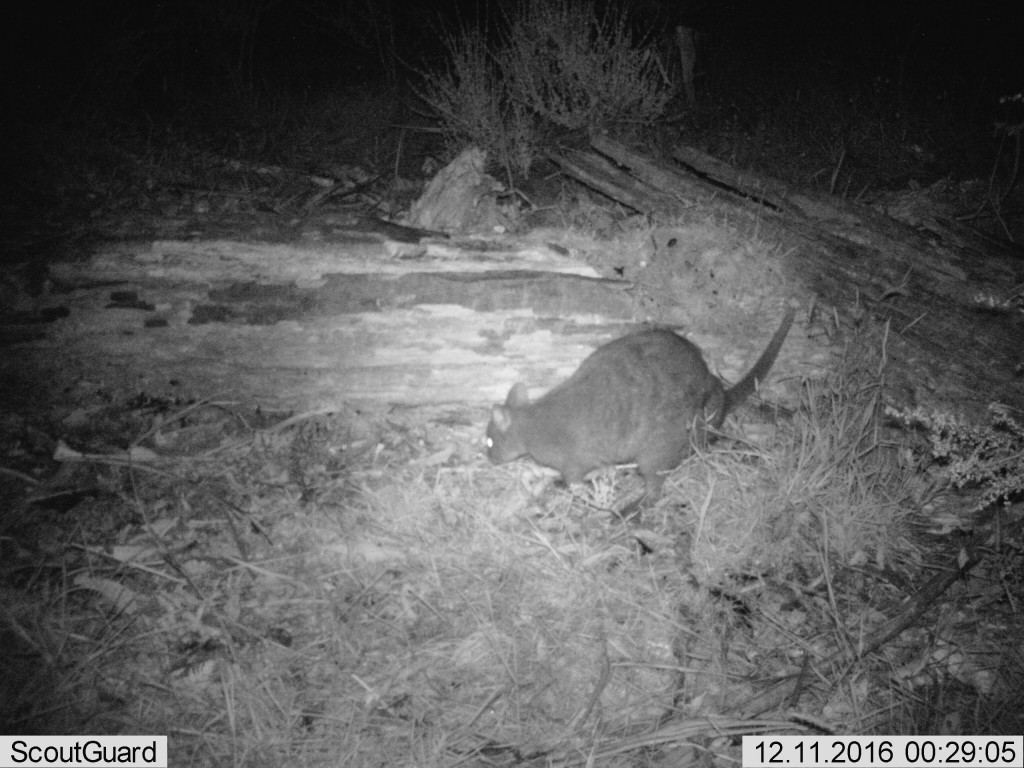
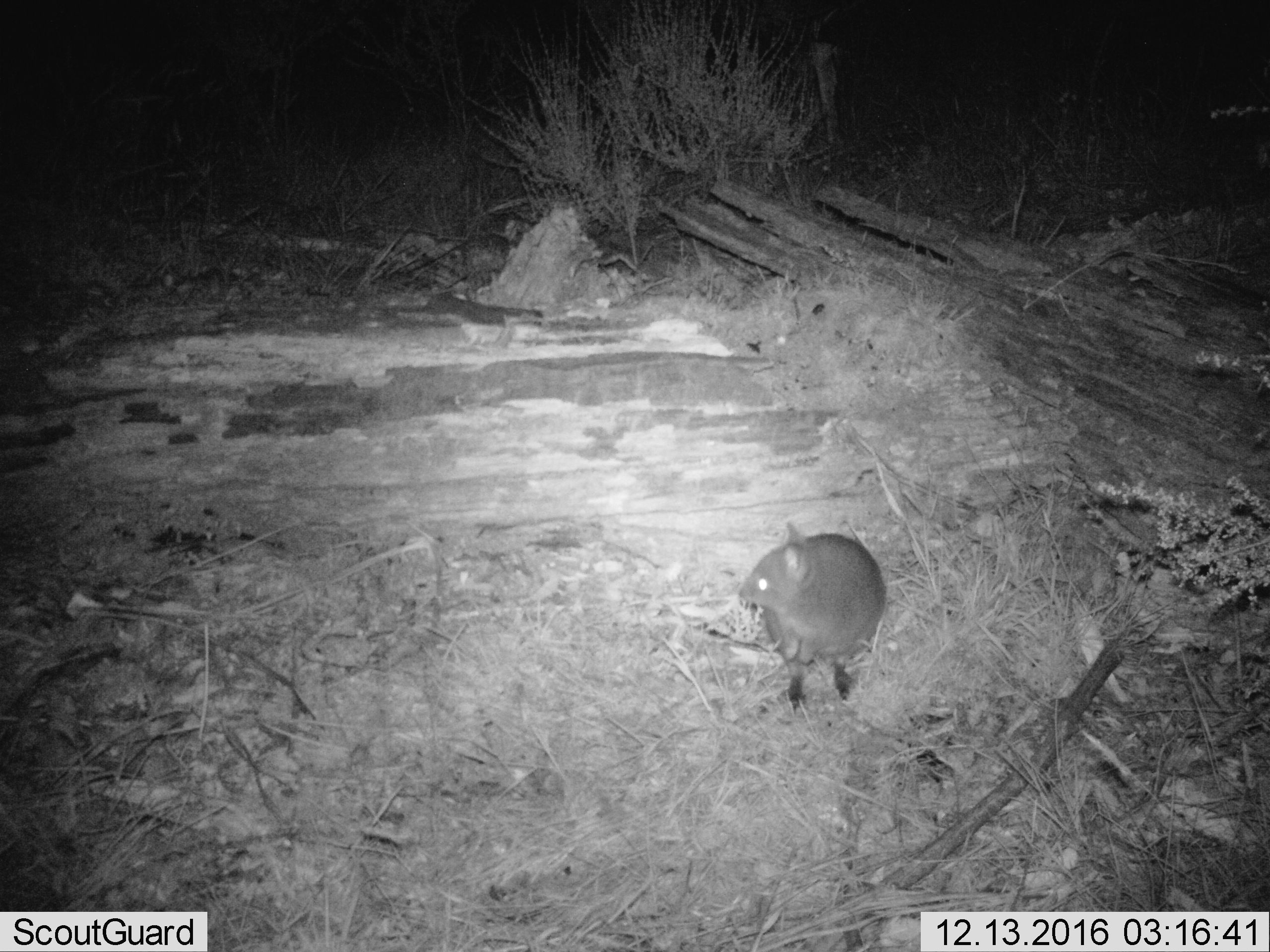
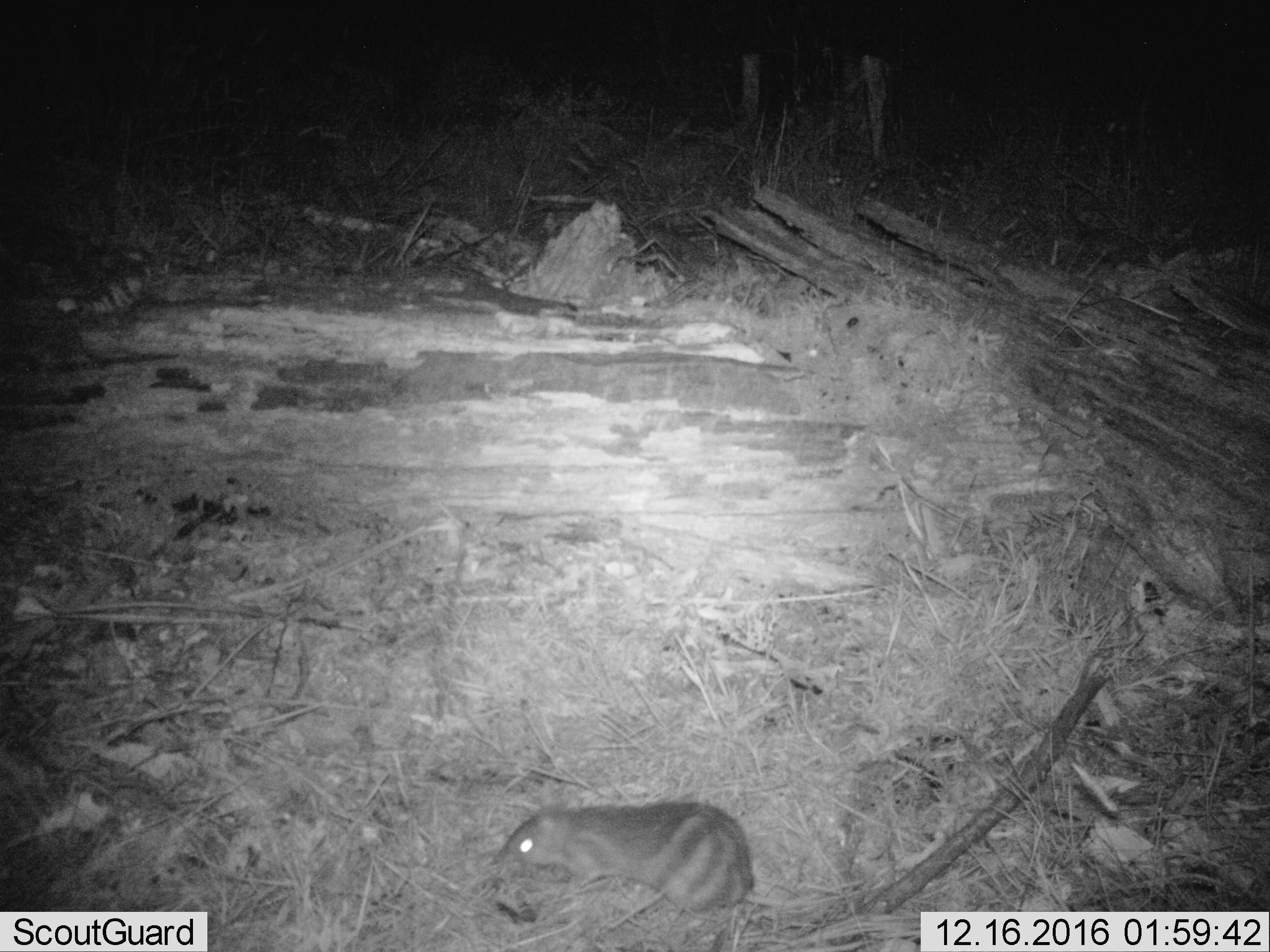

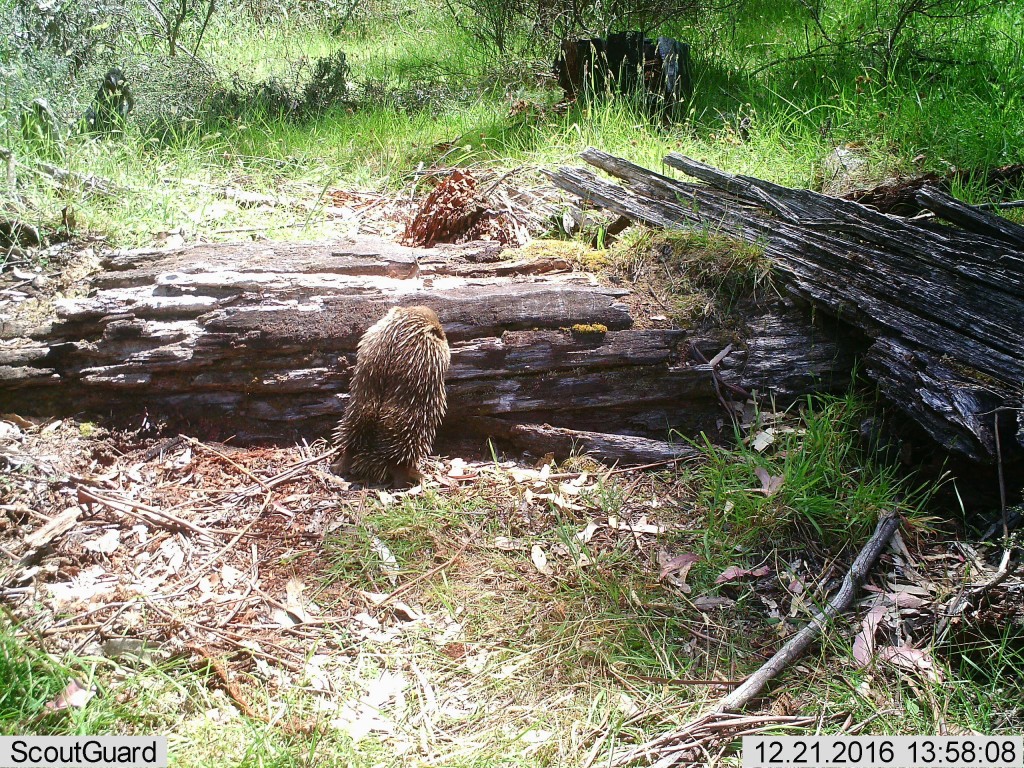

…and here’s a video of the entire set of interesting photos, one frame every two seconds to make everything reasonably easy to identify:
Finally, if you’ve got a pile of JPEG images you want to turn into a video like the above, and you’re running Linux, something like this should do the trick:
# ffmpeg -f image2 -framerate 25 -r 0.5 -i %*.JPG -s 640x480 my-video-file.avi
Rough cider, or scrumpy, is trivial to make at home, and delicious. All you need is apples, a means of juicing them, and a source of yeast. For that matter, it’s trivial to make anything beer-like in strength. I’ve never understood jurisdictions that prohibit or limit home brewing – as is pointed out in the rather excellent Sacred and Herbal Healing Beers: The Secrets of Ancient Fermentation, if you want 5% alcohol, you can get it by combining four litres of water, half a kilo of sugar and some yeast.
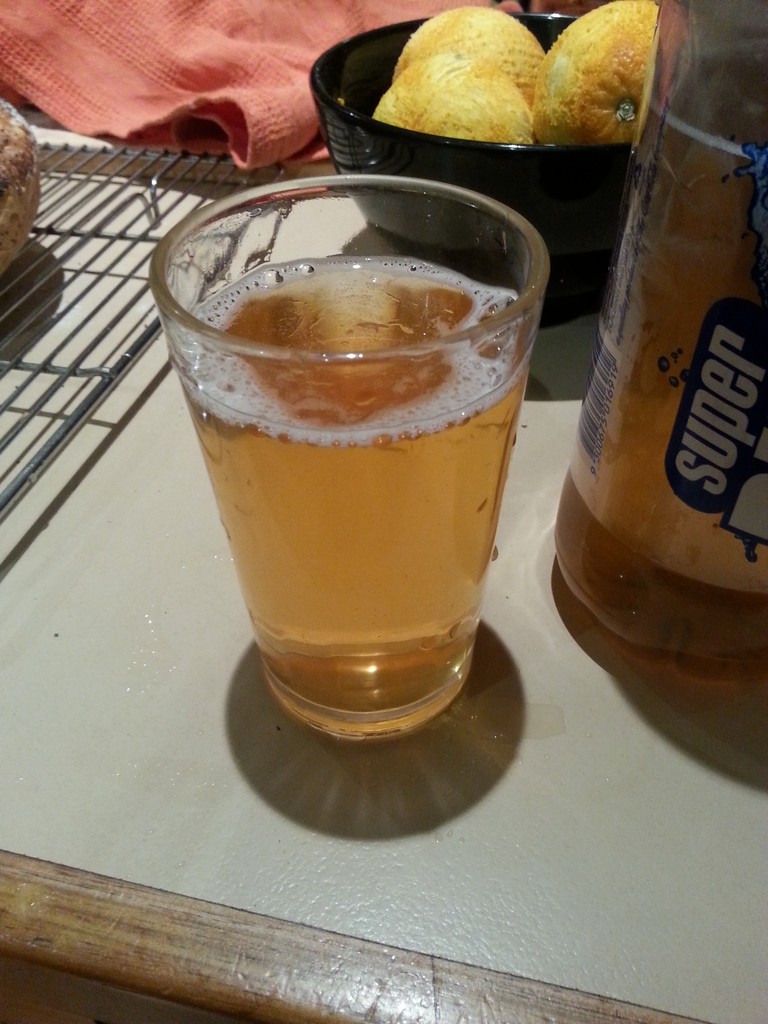
Continue reading
Last weekend we held our first chicken husbandry and slaughtering workshop. This resulted as a lot of the people who get eggs from us ask us what they can do with the cockerels they hatch. For health reasons we don’t offer to take them back. Plus it’s ideological. If one is going to hatch eggs we feel one should be prepared for the inevitable results of that hatching i.e. there will be some blokes. Pretty much guaranteed really. Too many people abandon cockerels by the side of the road here. It’s really sad and there is no excuse for abandoning any animal one is responsible for. My first advice to people asking what they can do with their unwanted cockerels is always that they should eat them. Honestly they will be the best chicken you have ever eaten. This elicits two types of response. One is “I don’t know how to kill them” and the other is “I could never do that”. For the latter we offer a couple of suggestions. The Raptor and Wildlife Refuge of Tasmania does accept live roosters. You can find more information here. You can also contact Bonorong Wildlife Sanctuary. They have some devils and may be interested in taking cockerels. Any place that has captive devils may be interested in taking cockerels. For the former we ran this workshop.
The very frosty cold day kicked off with a tour of the farm during which we explained our husbandry practices. We talked about how to house your chooks, discussed how and how much to feed them, and discovered how to make sure they are well and happy. But soon the moment of truth was upon us and participants had to chop off their first chook head. There was some trepidation, mostly people wanted to make sure they weren’t going to cause the chook any suffering. Facing such existential realities as death can be confronting. It is especially so in our society, which is living in denial of death. But in the end everyone got their chook’s head off very quickly and efficiently.
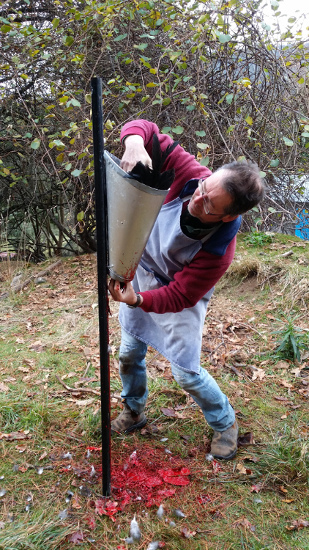
Soon we were in the midst of a giant pile of feathers as everyone plucked their chook. It was awesome to see everyone pitching in and helping each other pluck their chooks.
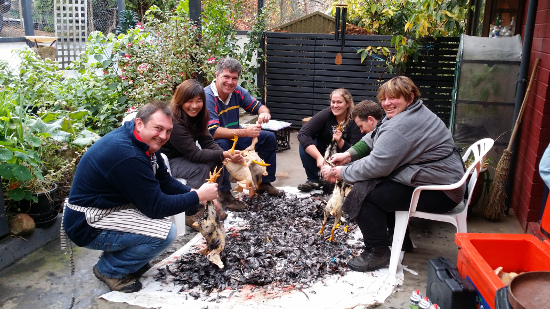
Once all chooks were plucked it was over to the big table for instruction in gutting. We explained the process in brief, then demonstrated on one bird: remove the feet, the crop, the neck, then slit across the underside below the vent, reach up inside and pull the innards out, then finally cut around the vent, and you’re done. After that, everyone started on their own chooks. Some attendees were faster, some slower, but everyone got the job done well. Reactions to the various sensual assaults varied, “Wow, it’s still really warm inside this bird”, “I’m nervous about using too much pressure when pulling the guts out in case I rupture an intestine or something” — “It’s OK, you need more force than you think you want to apply, but then suddenly it all just works smoothly”, “I’ve done this before, but your method of cutting around the vent is easier that I used to do”, “Is this meant to smell like this?”.
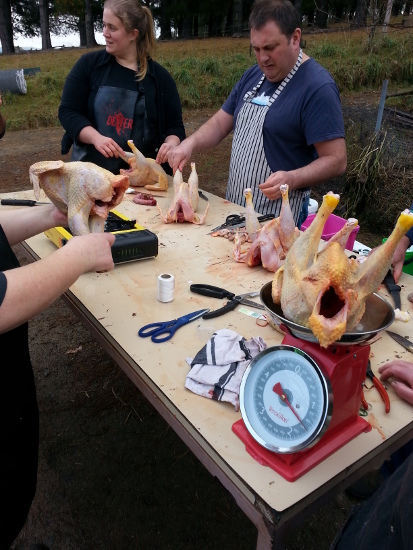
As we sat around the fire and ate chickeny dishes there was much discussion of farm life in Tasmania. It was interesting to hear the diverse perspectives on raising one’s own food, both animal and vegetable. Some themes were agreed on by all, the satisfaction of producing one’s own foods, the strange priorities of government, the need for awareness of animal rearing practices, and the desirability of sustainable systems.
We had more people wanting to do the workshop than we could accommodate so we have decided to do another one on the 3rd of July. Please email me to book.
Ok, so maybe we jinxed it by posting about how little rain we had had this year. We have had 176mm of rain in the last three days. 78mm of that in the last 24 hours, and it’s still raining…
Remember our last post where we bemoaned our dam looking like this.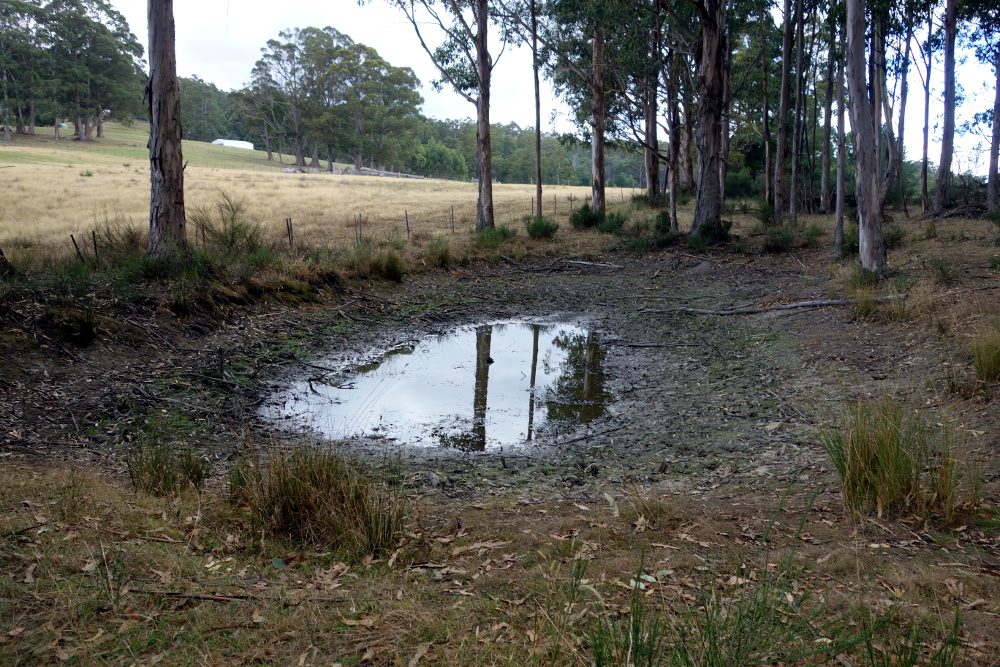
Well now it looks like this.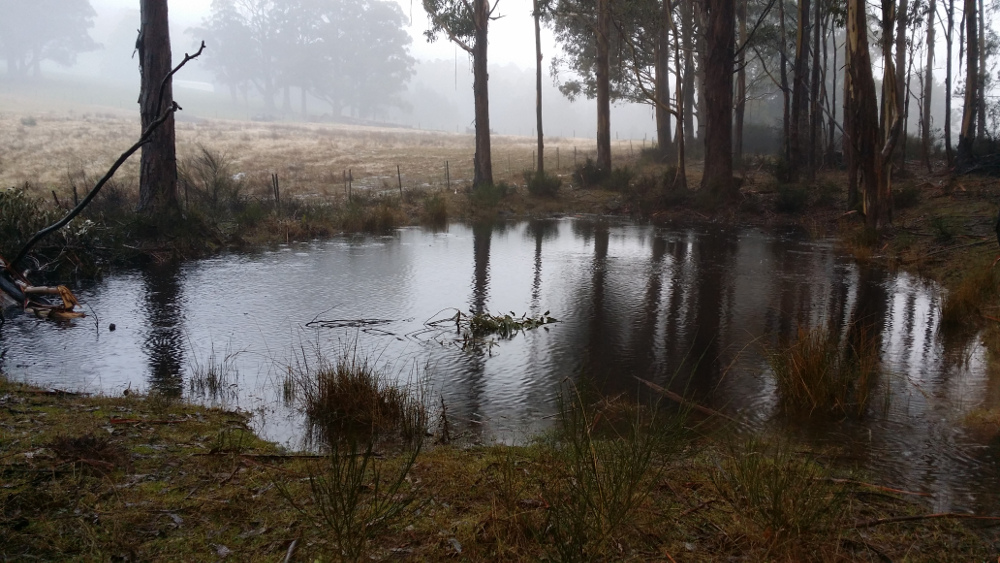
Our rainfall graph, which looked like this.

Now looks like this.
